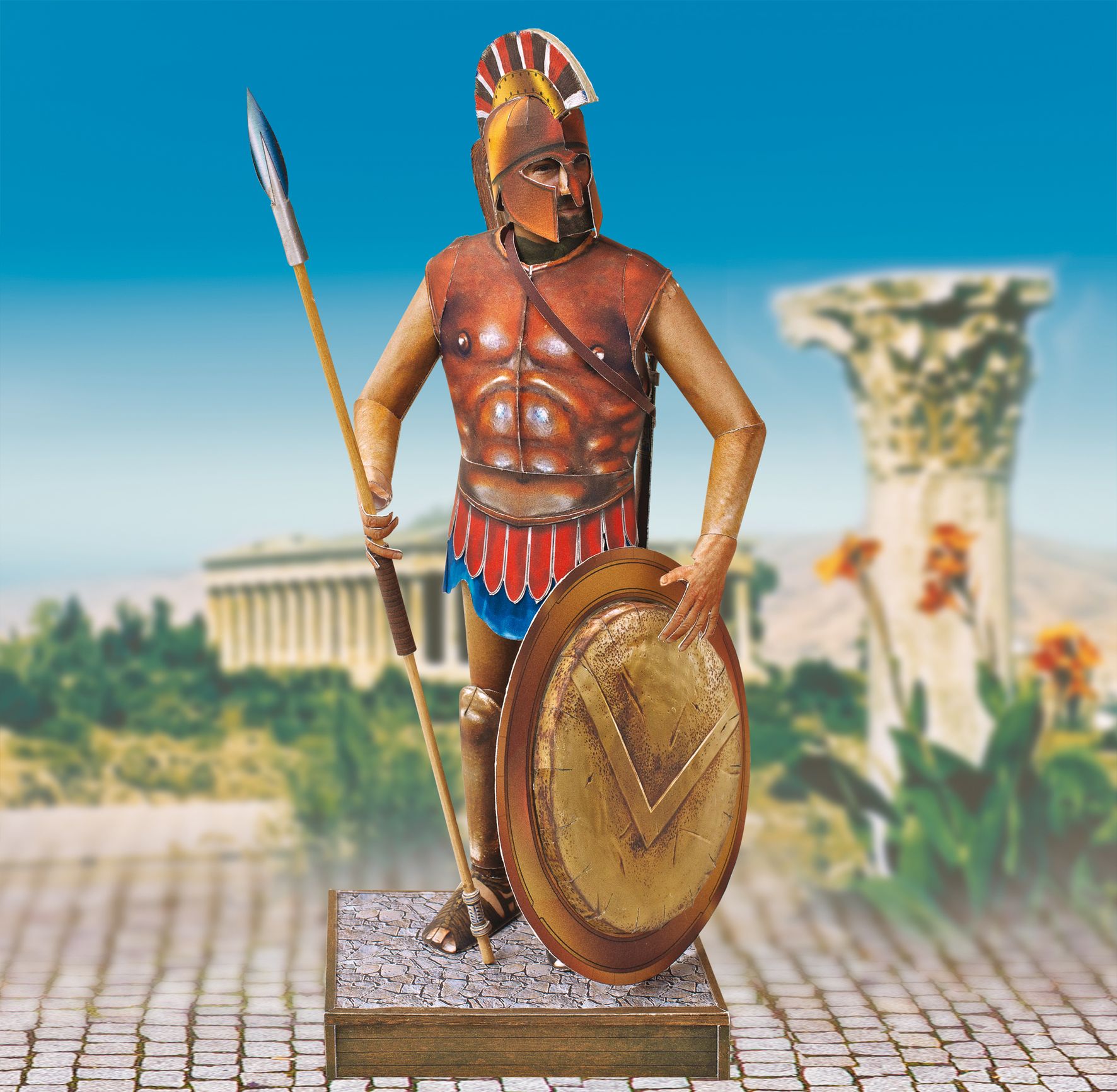Schreiber-Bogen - Greek Hoplit
Soldiers in Ancient Greece
The Greek hoplite in full armour experience with the scribe craft sheet.
This model shows a hoplite. He was armed with a thrusting lance and with a short sword which was used when the lance broke. A round wooden shield with a bronze frame served as protection. Some shields were also completely covered with bronze. Usually a shield was decorated with the family coat of arms or another personal sign of the owner, in Sparta and later also in other cities uniform shield signs were introduced. As breastplate, the hoplite wore bell armour made of brass. The greaves were made of bronze. Due to the use of several metals, the equipment of a hoplite was rather expensive. Hoplites who came from poorer classes therefore dispensed with some items of equipment or made them from lighter materials.
In ancient Greece there were military conflicts between the individual city states almost every year. The reasons for this varied greatly. Often the government, which was newly elected every year, was concerned with honour and political recognition. The leading politicians were also commanders. Every male citizen of a city was also a soldier and had to make himself available when war broke out.
The military position corresponded to the social position, as every citizen had to pay for his own equipment. In addition to armour and weapons, nobles could also afford horses and thus attained higher military offices. The nobility usually also financed the wars. The battle itself was usually decided by the simple foot soldiers in man-to-man combat. With the economic rise of the non-noble population, warfare also changed. In the 5th century BC, fighting on land was no longer man against man, but in a phalanx. A phalanx consisted of several rows of soldiers standing in a line, forming a wall of their shields. The soldiers of the phalanx were called hoplites.
| Aspiration scale: | Easy |
|---|---|
| Time Line: | 2,0 Hours |
Distributor
PGI-Skarabäus, Im Kränzliacker 9, 79576 Weil am Rhein, Germany, www-pgi-shop.de
PGI-Skarabäus, Unterdorfstrasse 23a, 4143 Dornach, Switzerland, www-pgi-shop.ch
Manufacturer: Aue-Verlag GmbH, Postfach 1108, 74215 Möckmühl, Germany, www.schreiber-bogen.de
Adult supervision:
Children under 14 years of age should be instructed by adults on correct use to avoid risks from improper handling.
Risk of injury:
Be particularly careful when handling scissors and craft knives! Use sharp tools carefully and, if necessary, take suitable safety measures to avoid injuries.
Use of adhesive:
When using adhesive, follow the manufacturer's safety instructions. Work in well-ventilated rooms and avoid skin or eye contact.
Be careful with small parts:
Hazard of suffocation! Keep small parts out of the reach of small children.
Fire hazard:
Keep away from open fire and heat sources. Product contains highly flammable materials and can ignite or melt.
Intended use:
The material may only be used for its intended purpose. Independent modifications can impair functionality and safety.

